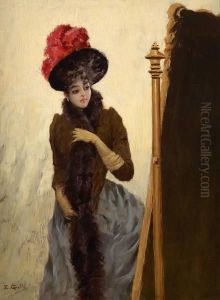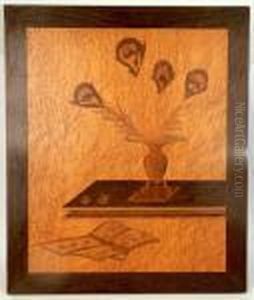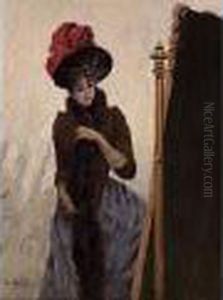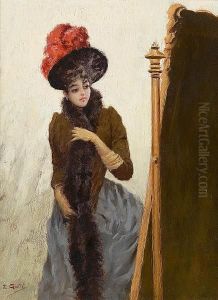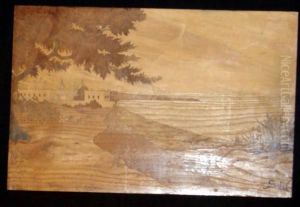Emile Galle Paintings
Émile Gallé was a French artist and designer who played a pivotal role in the development of the Art Nouveau movement. Born on May 8, 1846, in Nancy, France, into a family with a rich background in the ceramics and glassmaking industry, Gallé was exposed to the arts and crafts from a young age. His early education was steeped in the study of philosophy, botany, and drawing, which profoundly influenced his artistic direction. Gallé's work is best known for its innovative use of materials, particularly glass, and his naturalistic designs that often incorporated plants, animals, and landscapes.
After studying at the École des Beaux-Arts in Paris and working in various glassmaking workshops, Gallé took over his father's glassmaking factory in Nancy in 1877. He revolutionized the art of glassmaking by introducing techniques that allowed for the layering of colored glass, intricate etching, and the inclusion of metallic foils. Gallé was not only a master of glass but also worked with ceramics and wood, bringing his distinctive floral and faunal motifs to furniture design as well.
Gallé was a key figure in the École de Nancy, a group of artists and designers who sought to democratize art and design as part of the larger Art Nouveau movement, which emphasized organic shapes and themes. His work was internationally acclaimed, earning him numerous awards and recognition at various world's fairs, including the Paris Exposition Universelle of 1900, where his work was met with widespread acclaim.
Émile Gallé's contributions to art and design were not just limited to his creations but also extended to his writings and advocacy for the integration of art into everyday life. He believed strongly in the idea that beauty and functionality should coexist, influencing generations of artists and designers. Gallé's legacy is preserved in the Musée de l'École de Nancy, which houses a significant collection of his works and those of his contemporaries. Émile Gallé passed away on September 23, 1904, but his vision and artistic innovations continue to inspire and influence the fields of glassmaking, design, and beyond.
